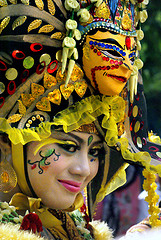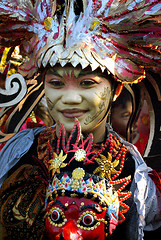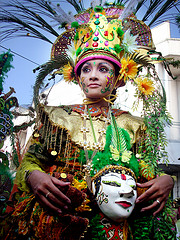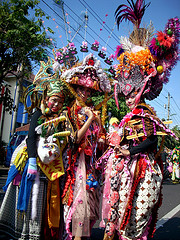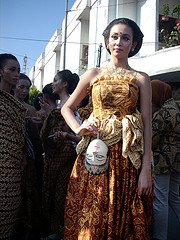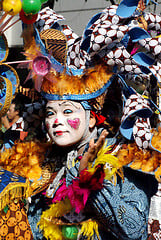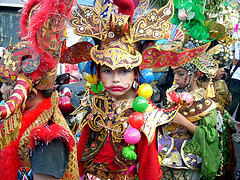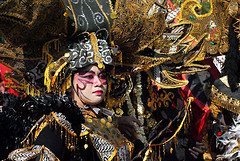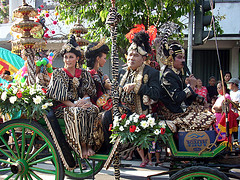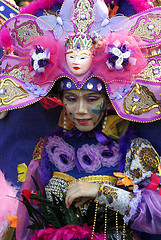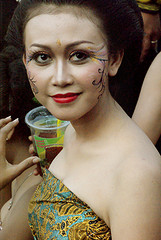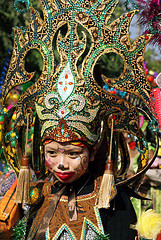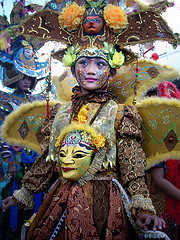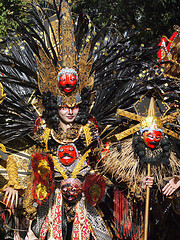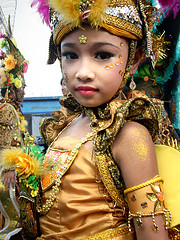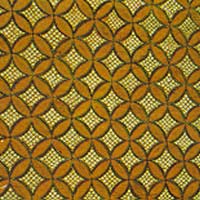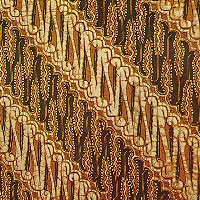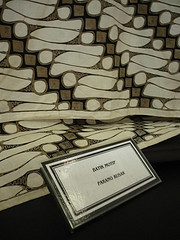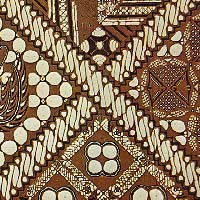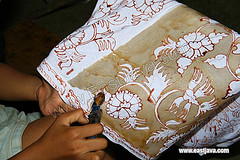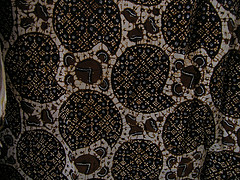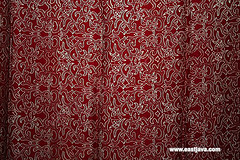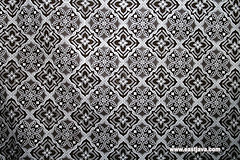A Journey to Solo Batik Carnival 2009
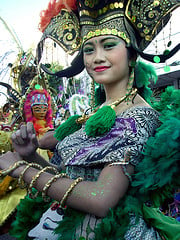
This is really fantastic, I love it so much. There was a real International Carnival in my birthplace Solo, Central Java Indonesia. This is the second one, it's Solo Batik Carnival 2009. The Carnival was held at 26-28 June 2009. Opened by the Minister of Commerce Ms. Mary E. Pangestu and followed by 86 Batik traders in Central Java. The theme was : Mask
Solo Batik Carnival 2 (28 Juni 2009)
The Carnival was held along Slamet Riyadi Street (the main street in Solo) from Purwosari crossroad to Gladag Circle. This event could be a very great opportunity for tourism in Solo and if you watch their batik creation, you will be surprised of their creativity and ideas. This event aims to approach the community with the wisdom of their own culture and love the growing of their city which is more plural and multiculture. This is The Spirit of Java.
There are three types of mask which are used in this Carnival.
1. Panji that describe a king mask with his beauty and elegance.
2. Kelana that describe a knight or giant mask with his anger and power.
3. Gecul that describe a clown mask with his comedian and funny looks.
Solo Batik Carnival 2009
Click thumbnail to view full-size














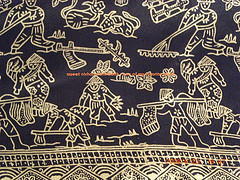
All About Batik Links
- Batik, Traditional Indonesian textile from the island of Java
An introduction to the fascinating world of Indonesian batik - The Step-by-step Process of Making Batik
An introduction to the fascinating world of Indonesian batik - Making Batik Fabrics, The Batik Making Process, How To Make Batik
Batik is a traditional resist dye technique created in Java hundreds of years ago but still in use today
Batik as my local culture
Batik is always connected with Indonesia. The word Batik is came from Javanese word "amba" that means dot (a cloth with little dots) or in Indonesian language titik. Batik may also originate from the Javanese word 'tritik' which describes a resist process for dying where the patterns are reserved on the textiles by tying and sewing areas prior to dying, similar to tie dye techniques. Another Javanese phase for the mystical experience of making batik is “mbatik manah” which means “drawing a batik design on the heart”.
There are many types and traditional batik patterns, but the patterns and variations in accordance with the philosophy and culture of each region is very diverse. The Indonesian rich cultures has been encouraging the birth of various patterns and types of traditional batik with the speciality of their own characteristics
Batik in Indonesia has been known since the times of the kingdom of Majapahit and growing up to the next kingdom. The expansion of this batik art become the property of the people of Indonesia and Java in particular tribe was after the end of XVIII century or early-to-XIX centuries. Batik which was produced is a written-batik until the early XX century and the stamped- batik was known after first world war or around 1920. Batik is now a part of the traditional Indonesian clothing
Many years ago Indonesian people just wear Batik for formal occasions such as formal ceremony, wedding party, and traditional events. Now, Batik is more casual and become daily outfit. You may find people wearing Batik for work.
Batik Types
Batik Tulis or Written-Batik
A piece of cloth that is decorated by many kind of batik textures and designs using hand. The making of Batik tulis could be very long, it's about 2-3 months.
Batik Cap or Stamped-Batik
A piece of cloth that is decorated by batik textures and designs using copper stamp. The making process is faster than Batik Tulis, just 2-3 days.
Batik and Cuisine: A Heritage of Indonesia Fashion Show
Batik Designs
There are thousands of Batik design. But in general there are two kind of batik designs : geometric design and free form design. The design was influenced by many culture, like Chinese culture which is big in Indonesia give the Batik design a brighter color and more intricate flower and cloud design. You may find a dragon and phoenix design on Batik cloth too.
The European culture influenced a tulip flower design on Batik and when Japanese arrived they influenced with Batik Hokokai.












About Indonesia Hubs
- Eastern Indonesia Series : The Maluku Islands
My country Indonesia is the biggest archipelago country in the world that I really love and proud of it. I know that my country still categorized as developt country and has many social, economy, and...

